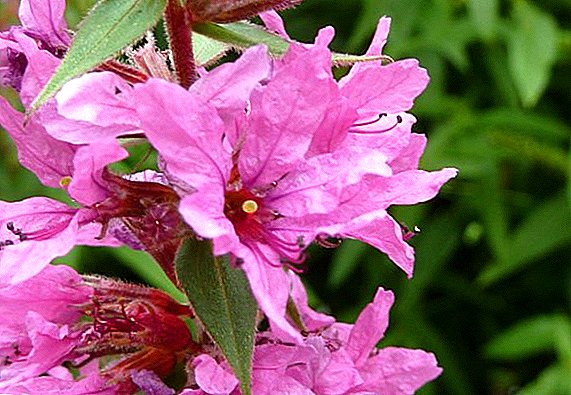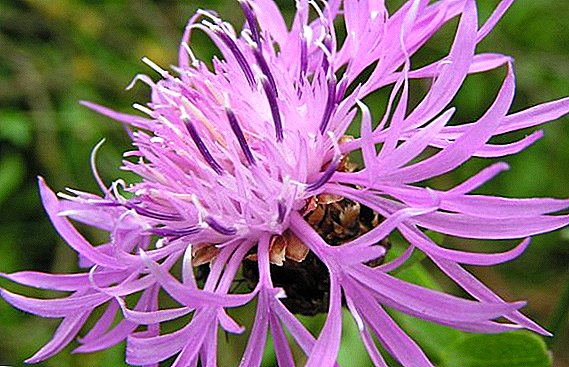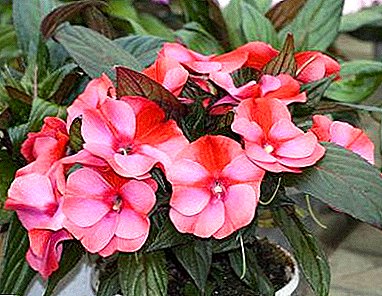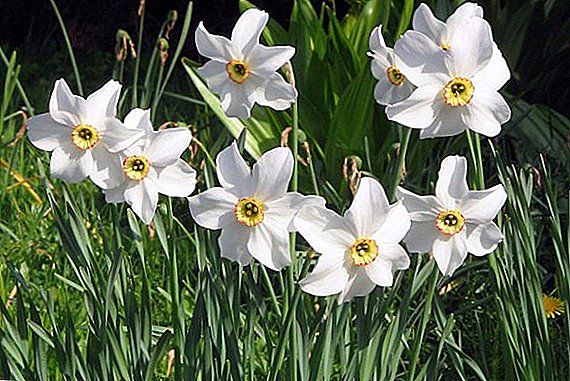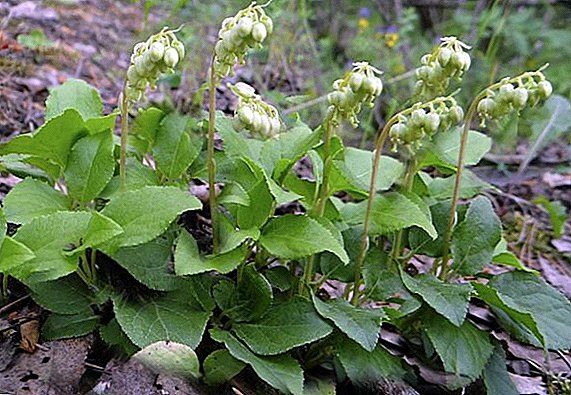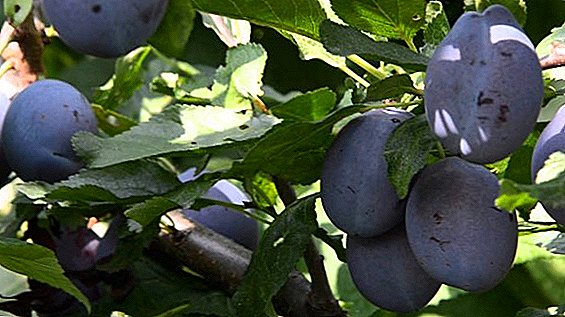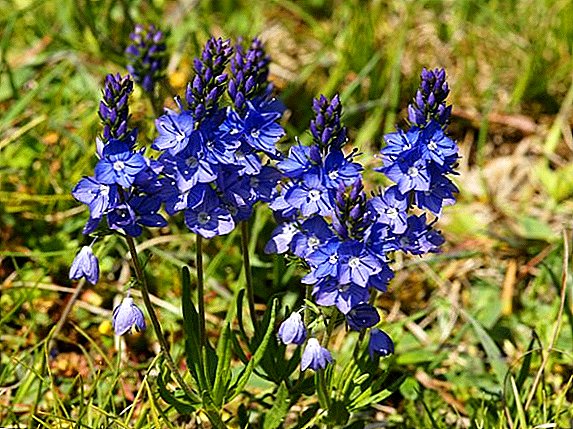 Gentle Veronica - a plant that boasts a variety of attractive flowers, without requiring special care in return. Compact and durable, these colorful inflorescences hold onto a bush for a long period.
Gentle Veronica - a plant that boasts a variety of attractive flowers, without requiring special care in return. Compact and durable, these colorful inflorescences hold onto a bush for a long period.
Many gardeners say that even despite the lack of top dressing, Veronica continues to bloom from year to year. Veronica’s peculiarities of the mysterious plant, planting and caring for this crop in the open field will be discussed in this article.
Planting and breeding flowers Veronica
Veronica is usually propagated by three known methods: seeds, dividing the bush and cuttings. Each of these methods requires attention and compliance with the rules and a certain sequence. You can use any of the available methods.
Seeds
 Consider the most common way of breeding Veronica - how to plant this culture with seeds. Propagation by seeds allows you to get a large number of plants.
Consider the most common way of breeding Veronica - how to plant this culture with seeds. Propagation by seeds allows you to get a large number of plants.
It is desirable that the seeds are fresh, of good quality, healthy, genetically pure and, accordingly, have good germination. Before sowing, add some room temperature water.
Seeds are placed at a distance of 2 - 5 cm from each other, sprinkled with earth. Veronica requires sowing her seeds to a depth of about 3 cm. Next, we cover with plastic wrap or plastic lid.
Then closely monitor the soil moisture. Under no circumstances should the soil be dry. Soil moisture is checked daily. To avoid the formation of fungi, make a few holes in the lid for air ventilation. The time of emergence of seedlings depends on the size of the seeds and the variety of Veronica.
Dividing bush
For flowers of Veronica, the division of the bush includes the complete digging of the plant and its division into two or more parts. This practice is usually carried out by gardeners in order to keep the plants healthy and create additional stock.
 Perennial flowers, such as Veronica, favorably tolerate such shock procedures. Veronica bushes are divided every 4 years, or when the plants grow too much. Procedures are carried out in the fall.
Perennial flowers, such as Veronica, favorably tolerate such shock procedures. Veronica bushes are divided every 4 years, or when the plants grow too much. Procedures are carried out in the fall.
Sharing a plant is easy: just dig out the entire root, and then carefully divide it into several sections, depending on the size of the rhizome. You can cut the roots with a garden or old kitchen knife. After that, shake off the excess earth and remove all dead parts. Transplant new young plants immediately into open soil or into large pots.
Important! After separation, the roots can be damaged and the flowers are generally weakened. Therefore, despite the endurance of Veronica, new plants need good feeding. Dig a hole larger than the root, apply soft compost and a mixture of fertilizers. Place the plant in a hole, cover it with earth and compact it. Do not forget to water intensively and regularly.
Cuttings
This method is most often used if they want to get homogeneous specimens of a plant, propagate and preserve their favorite species and varieties In addition, when cutting, young seedlings bloom earlier than when grown by seeds.
Works are carried out in early spring. Cut several shoots from the central stem of the plant. Cuttings need to be cut with a sharp knife so as not to damage the tissue. The length of cuttings on average is about 5 - 10 cm.
 Next, place the cuttings to a depth of 2 cm in pots with loose, moist soil (the best option would be a mixture of peat and sand). Cover the veronica seedlings with plastic wrap or plastic cover and place for 6 weeks in a warm place.
Next, place the cuttings to a depth of 2 cm in pots with loose, moist soil (the best option would be a mixture of peat and sand). Cover the veronica seedlings with plastic wrap or plastic cover and place for 6 weeks in a warm place.
Rooted cuttings are planted in pots. Pots should be in a bright, cool room. Keep out of direct sunlight. Plants need to be periodically aired and watered.
Within two weeks, young saplings form roots. It's time to take cover. Gradually accustom new plants to sunlight. With the onset of sustainable heat, in May or June, plants can already be transplanted into open ground to a permanent place.
Important! Keep young Veronica plants in well-moistened soil. Watch for regular watering before the bushes harden. Older plants are somewhat more resistant to drought. Veronica does not need any special fertilizer, except for a light layer of compost in the spring.
Where better to plant Veronica in the garden
Veronica is an excellent plant, which is characterized by high efficiency in growing. Most varieties of Veronica are very hardy and meet the requirements of our climate zone.
Flowers like sunny places with partial shadow. Therefore, for best results, plant them in a place where they will receive the morning sun and daytime shade.
 Veronica is tolerant to a wide range of soil types, but it thrives in moist, well-drained and acidic soil, which at the time of planting was enriched with a generous amount of compost or other organic matter.
Veronica is tolerant to a wide range of soil types, but it thrives in moist, well-drained and acidic soil, which at the time of planting was enriched with a generous amount of compost or other organic matter.
The soil should be brought to normal water balance. If the soil is dry, the flowers of Veronica tend to wither quickly. But if you resume watering, plants can be quickly reanimated.
Did you know? If you want to extend the flowering period of Veronica, there is a simple way to do this: remove several inflorescences growing together at once. During processing, be especially careful not to remove excessive amounts of leaves.
Partners for Veronica and use in landscape design
Veronica in landscape design can be used to design alpine slides, rockeries, flowerbeds and mixborders. This culture can give any landscape naturalness.
Shrubs look great near ponds, beautifully decorated even the curb and other places where not every garden plant takes root. In addition, the flowers of Veronica look great with partners such as Badan, Buzulnik and Highlander. A composition with a simple chamomile will also look harmonious.

Did you know? Veronica can be settled in the neighborhood even with such a contrasting plant as a rose. These cultures will perfectly complement and emphasize the color of each other. Each of them will become more visible in your garden. Thus, a very winning composition is created.
How to care for a plant in the garden
The blooming period of Veronica is from June to the end of October. Plants can reach a height of about one to two meters. Caring for perennial plants is quite easy: the requirements for the care of Veronica are minimal.
The only thing you need to remember - watch the soil moisture! Since the root system of Veronica leaves much to be desired, the plant responds well to the addition of clay to the soil and regular watering during a long drought (at least in the first season after planting).
 Or try to increase the acidity of the soil to prevent rapid loss of moisture from the soil and control the growth of weeds. For top dressing of bushes you can use any recommended and commercially available fertilizers. Process immediately after the beginning of the growing season, then resume work in mid-May. Since the end of July, potash fertilizers have been applied, which increases the frost resistance of the plant in the event of a long and cold winter.
Or try to increase the acidity of the soil to prevent rapid loss of moisture from the soil and control the growth of weeds. For top dressing of bushes you can use any recommended and commercially available fertilizers. Process immediately after the beginning of the growing season, then resume work in mid-May. Since the end of July, potash fertilizers have been applied, which increases the frost resistance of the plant in the event of a long and cold winter.
Flowers Veronica should be protected from the effects of cold and winds. For this purpose, the best air frame made from the branches of coniferous trees. Ensure the proper circulation of air to the plants, prevent the occurrence of fungal diseases.
Veronica does not require pruning, except for the removal of faded inflorescences and stalks damaged by frost or disease. Therefore, try to remove dried flowers or stems from time to time - thus you prolong the flowering season.
Possible difficulties in growing
Veronica flowers attract many butterflies, bees and other insects. But, fortunately, resistant perennials are immune to such threats and cope with them effectively. Veronica is also almost not affected by diseases and pests.
 The only thing that threatens it is gray mold and powdery mildew (fungal diseases).
The only thing that threatens it is gray mold and powdery mildew (fungal diseases).
To fight these fungi, use chemicals (for example, Horus, Oxio, copper sulfate).
Or use biological analogues (Topsin, Fundazol, Falcon, Tekto), which will be non-toxic to humans and animals. To combat fungal plant diseases in enclosed spaces, the use of biological preparations is more acceptable.
In addition, the bushes of Veronica are sometimes attacked by aphids and thrips. But if they do not meet in large numbers, you can be calm and not take any action. After 2-3 weeks, the plants independently cope with their natural enemies, there will be no trace of the pests.
Veronica seems to be a small and defenseless bush, but in fact it is a perennial with a very strong character. Having planted Veronica's tubers in your garden, every year, from spring to autumn, you will enjoy this unpretentious and bright plant. The graceful flowers of Veronica will shine brightly in your garden in blue, pink and white.


